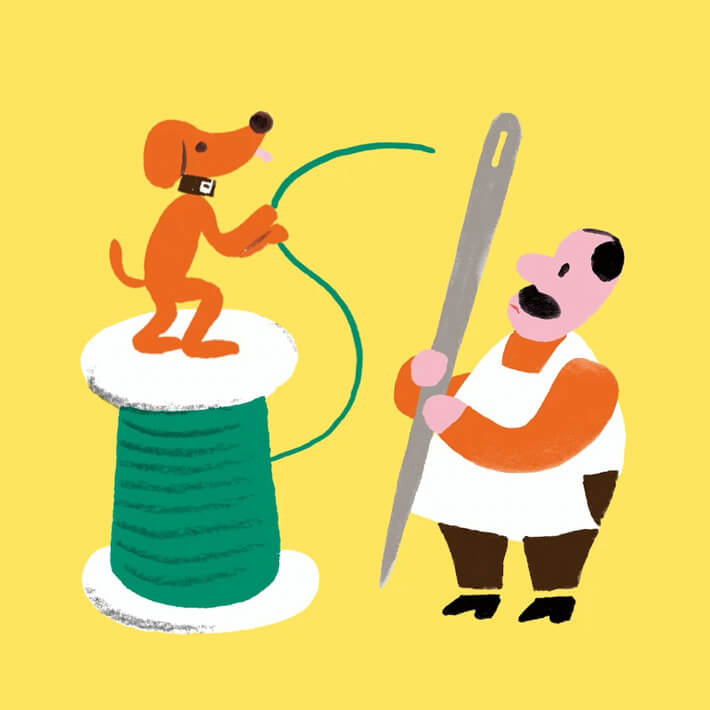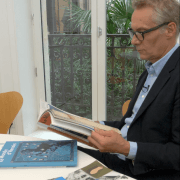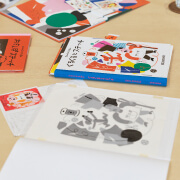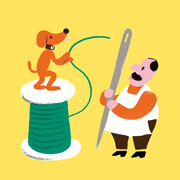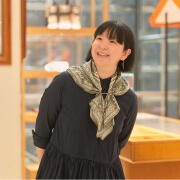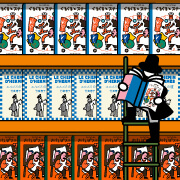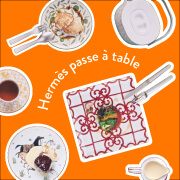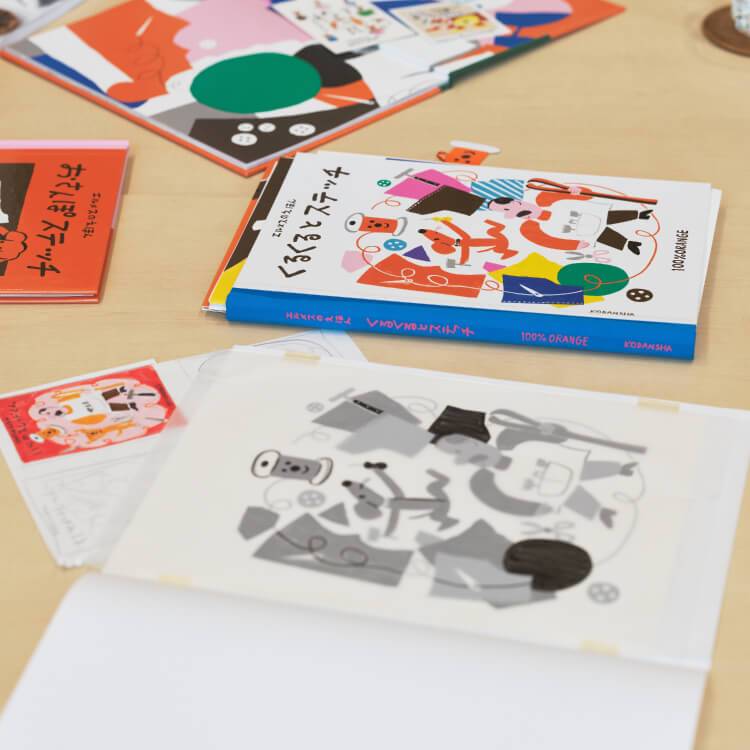
SPECIAL CONTENTS
The story behind Hermès’s
newest picture book
The November theme at Lanterne Hermès is “bouquinistes”. The bouquinistes are the merchants who run second-hand bookstores along the Seine, an indelible part of the Parisian landscape. Hermès’s first-ever picture book, Osampo Stecchi (Stitching while strolling; published by Kodansha), came out two years ago. The recent release of the sequel, Kurukuru to Stecchi (Twirl and Stitch; published by Kodansha), is perfectly timed to coincide with this month’s theme. Let’s hear from Kenji Oikawa and Mayuko Takeuchi of 100%ORANGE, the duo who wrote and illustrated both books, to learn what this new story is all about.

Hermès’s craftsmanship extends to picture books
——An idea blossoms into a story
Oikawa: When I travelled to France to prepare for the first book, Hermès took me to visit a leather workshop in Paris and a silk scarf workshop in Lyon. I witnessed a lot during those visits, from the craftspeople and their tools to the atmosphere of the workshops. It was wonderful to see the sides of France I never knew about—the beautiful greenery in the cities, the decorative shutters on all the windows, the traffic lights that are so different from the ones in Japan, even the way the crosswalks look.
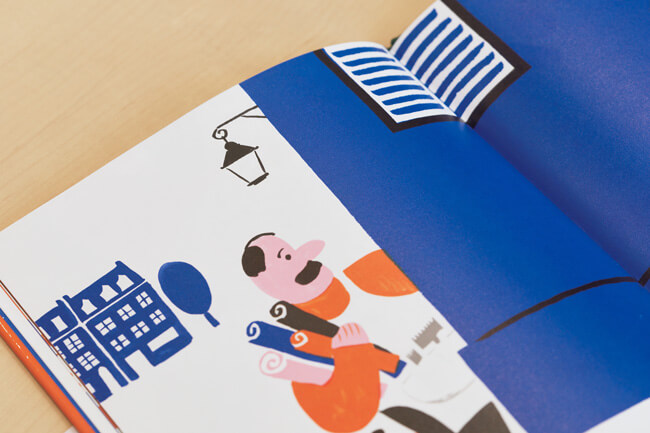
The first book was all about the inherent power of an artisan’s skills because I was so impressed by the craftsmanship on display in Hermès’s workshops. I was also fascinated by the tools that the artisans rely on, so we decided that they should be the focus of the second book. We love tools that have a very specific purpose and can be used for nothing else because they exemplify the idea that form is function. We wanted to shine a light on both the melancholy and the beauty of a tool that can only do one thing. We thought about how dark and quiet the workshop must be at the end of the day, after the artisans have turned off the lights and gone home. And then we imagined the tools, after being busy for a whole day, just sitting in that darkness. We thought, “That’s something we can tell a story about!”
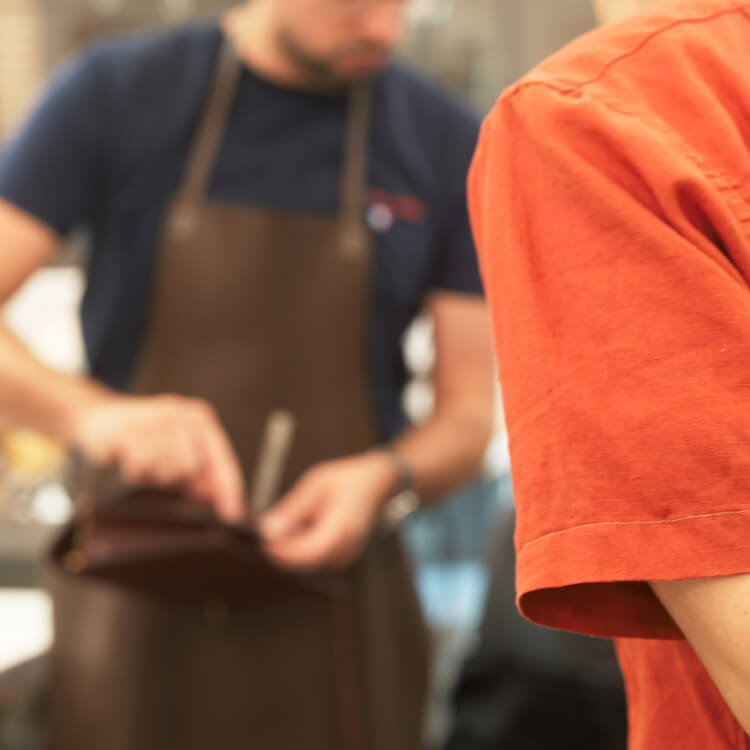

——Telling an interesting story
Oikawa & Takeuchi: At our cores, we always want to make something different to what we’ve made before. So, rather than have the main characters of the first book—the old man and Stitch the dog—appear from the very beginning, we thought that kids might get a kick out of it if they don’t show up until the middle. So, that’s what we did. This time the main character is a spool of thread, whose connection to the first book will become clear to those who’ve already read it.
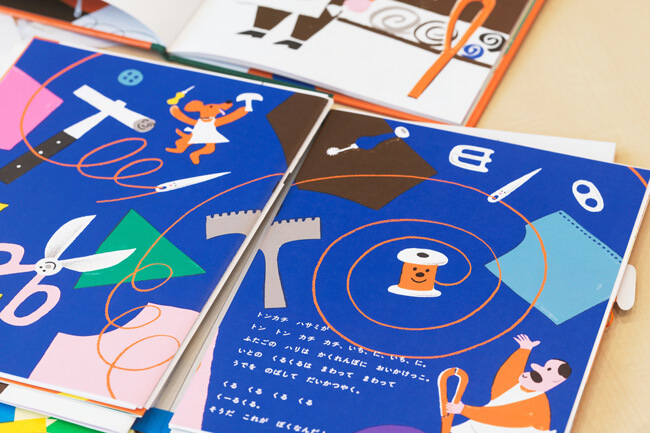
We decided to tell the story from the point of view of the thread, starting from a small table and then slowly zooming out to expand the scene as the story unfolds. It is fascinating how an Hermès craftsperson’s desk is like its own miniature world. So, we begin with the top of a desk, then pull back a little to show a workspace, and then go even further to show a shop—or wait, maybe it’s someone’s home? That’s the general idea. Once you realise the story takes place inside a house, you’ll also see the man and Stitch. Only then will you finally see how everything connects. Our goal was really to change the reader’s perspective in this way.
Also, we added something special for kids to find once they read all the way to the end. We hope that they have fun with our little surprise.
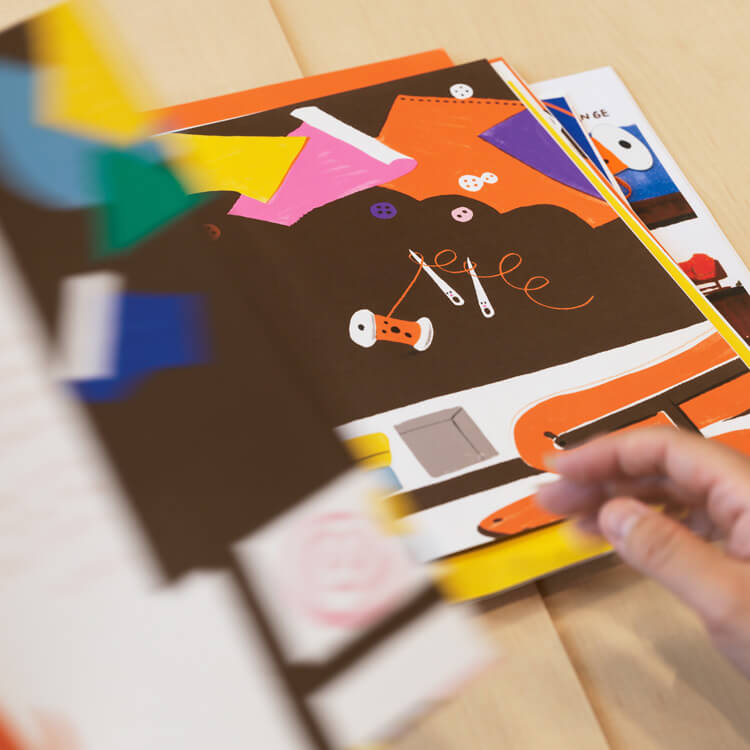

——A bit of backstory
Oikawa & Takeuchi: At first, the main character was going to be a needle, not a piece of thread. But the needle was too thin—and even adding eyes and a nose didn’t make it particularly cute! That’s when we remembered the spools of thread in Hermès’s workshops. Every bag is sewn by an artisan using a needle and thread, but the thread—unlike the needle—becomes a part of the bag. It stays with the bag and goes around town with its owner.
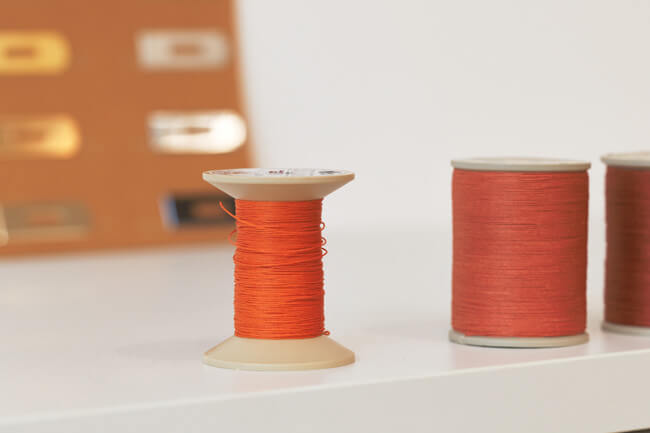
——The artistic process
Oikawa & Takeuchi: We like things that feel handmade, so we think it’s important to make our drawings by hand too. However, to match the book’s aesthetic with that of Hermès, we went with a technique that combines the freedom of hand drawing with the colour compositions of computer graphics. So the things that people love about hand drawings are still there, but now there’s a design element added to the mix.
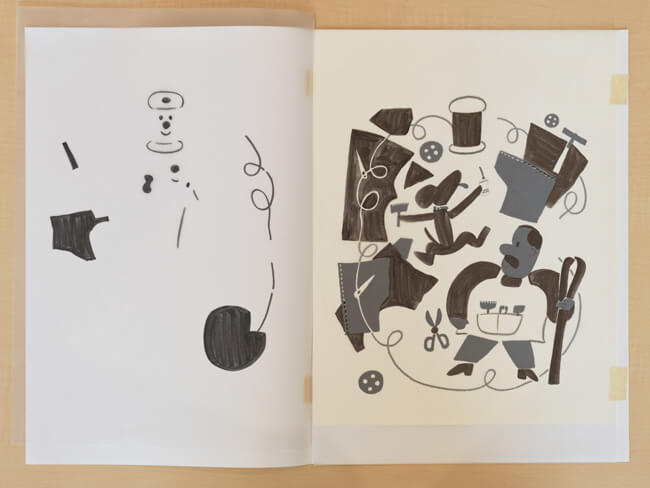
To make each spread, we copied our sketches onto sheets of tracing paper, one sheet for each colour. We then scanned the tracing paper into the computer, specified the colour of each sheet, and finally composited them all into a single picture. After learning how Hermès’s silk objects are made at the workshop in Lyon, we were struck by the realisation that although we may be working on a different scale, the process by which we make our art is the same.


——A French influence
Oikawa: The quintessential image of France, to me, is the kind of thing you might see in a Jacques Tati film—where the humour comes from simply watching a taciturn old man walking around. There’s beauty, but also humour and cynicism; lovely colours and shapes, but with a sense of mischief that unexpectedly imbues them with elegance. That is why the old man in the books is so reserved—he is quietly focused on his work.
We also took inspiration for the art style from some French illustrators. I first fell in love with Raymond Savignac’s commercial art, and later discovered André François, who illustrated Roland and Crocodile Tears. I have also been a fan of Jean de Brunhoff’s Babar the Elephant for a long time. While I was in Paris touring the workshops, I had time to stop by a used bookstore, where I came across a picture book by Nathalie Parain that I’d been hoping to buy.
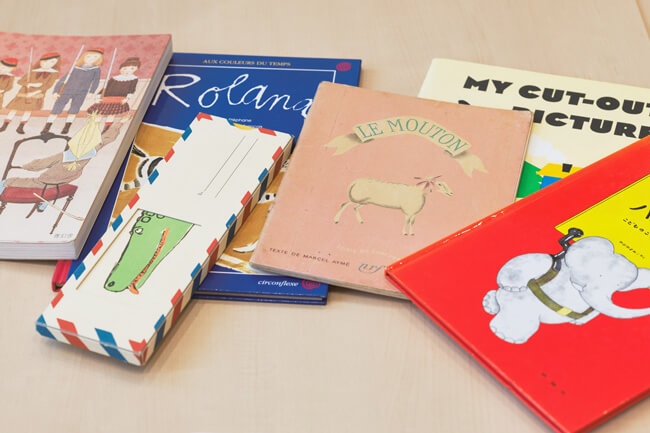
Until we started working on the Stitch books, we had spent our whole lives knowing very little about Hermès. Now that we’ve gotten to collaborate with them, we’ve realised that it’s a much more interesting company than we had expected, that it isn’t afraid to be fun and silly, and I mean that in the best way. The silk workshop in Lyon, where a chatty older man showed me around as part of a rather full schedule, was also interesting. I was given heavy safety shoes to wear on site, which was exhausting—but certainly memorable. That said, I was so embarrassed by how tired I was that I started doing walking workouts immediately after getting back to Japan!
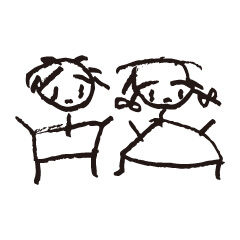
100%ORANGE
A duo consisting of Kenji Oikawa and Mayuko Takeuchi, 100%ORANGE creates illustrations, picture books, manga, and animations. They illustrated Shincho-Bunko Yonda?, a campaign to promote reading, and won the Grand Prize at the 13th Japanese Picture Book Award for Yoshio-kun ga Gyunyu o Koboshite Shimatta Ohanashi (The story of when Yoshio spilt his milk).

